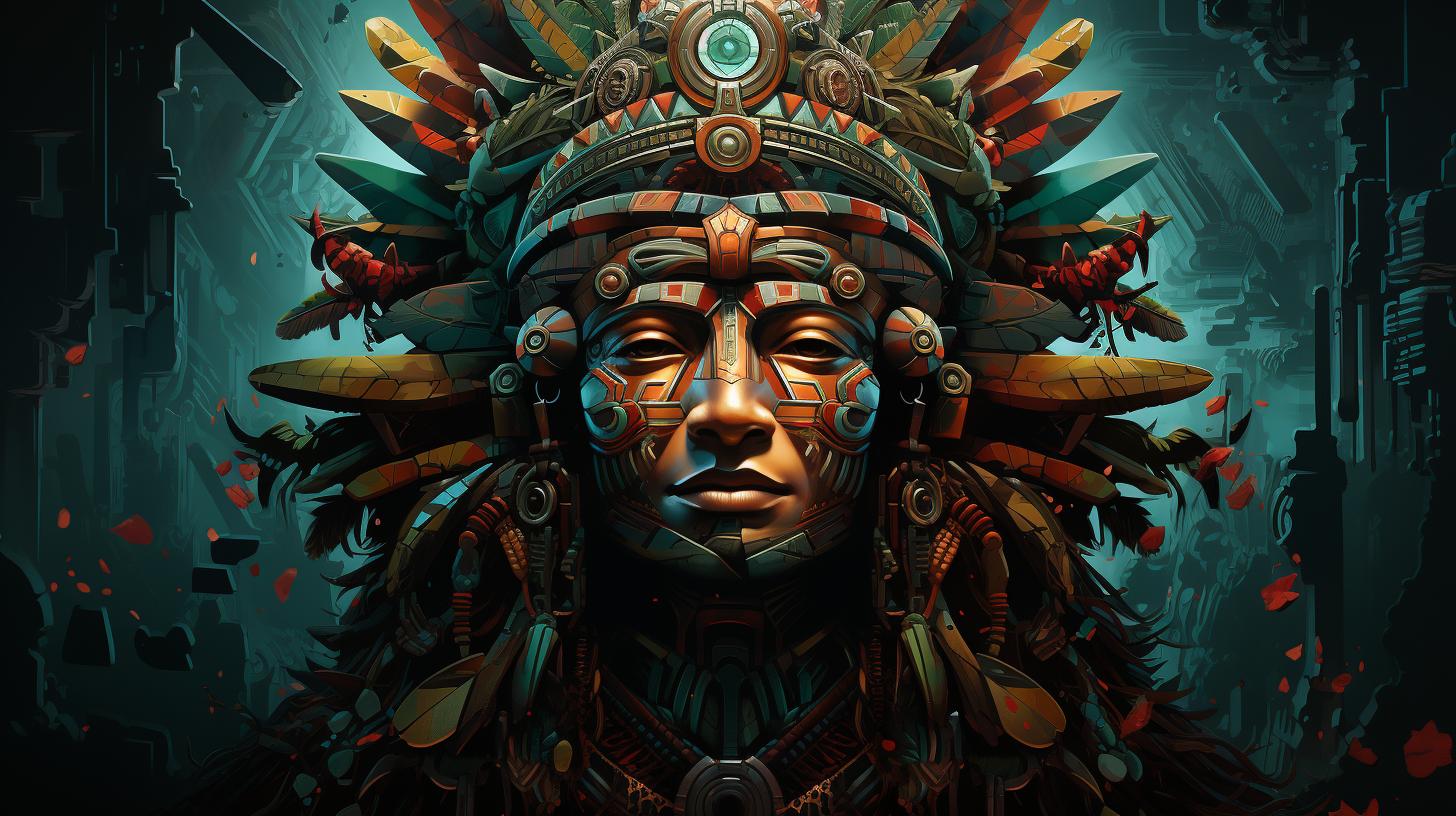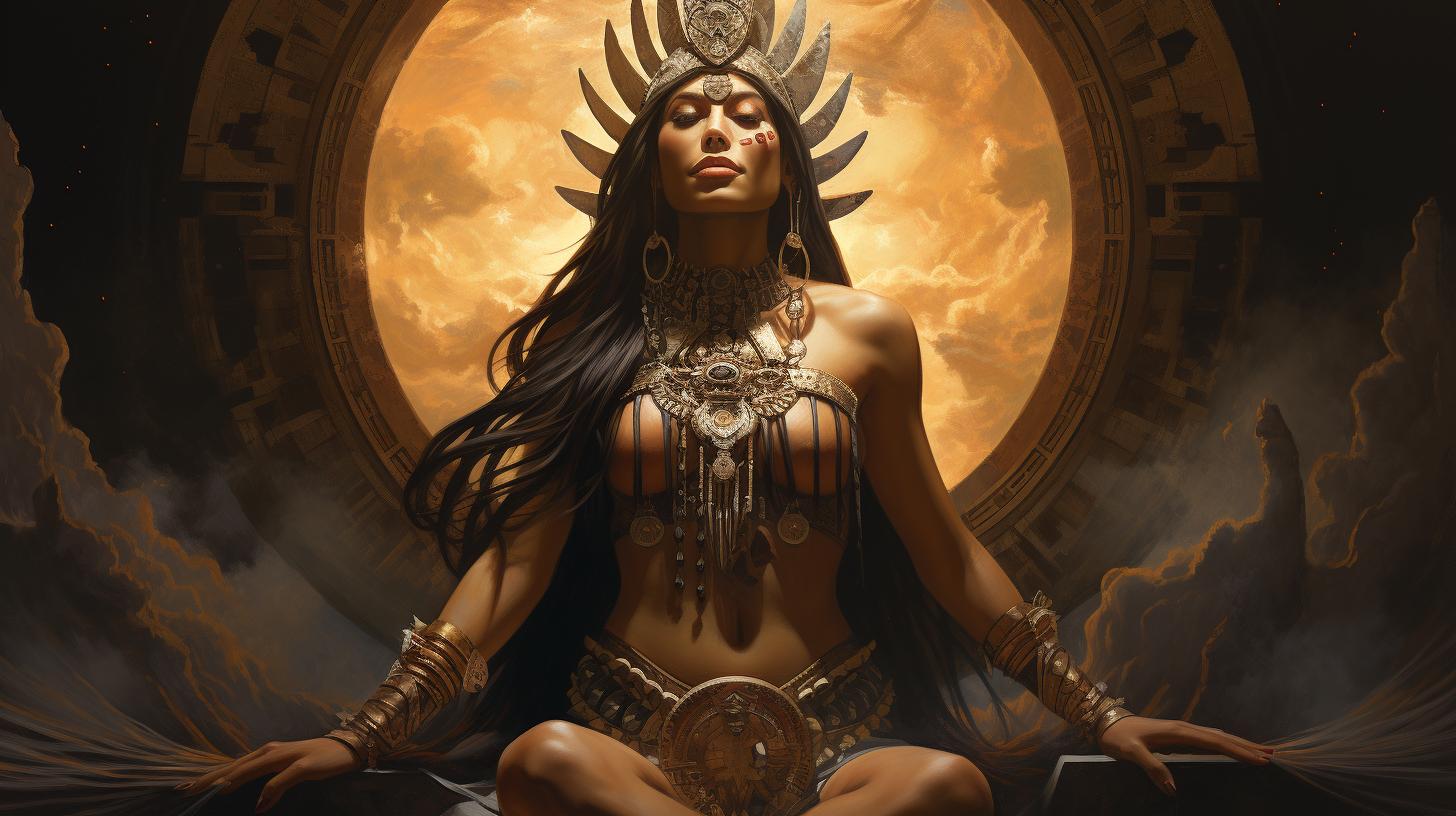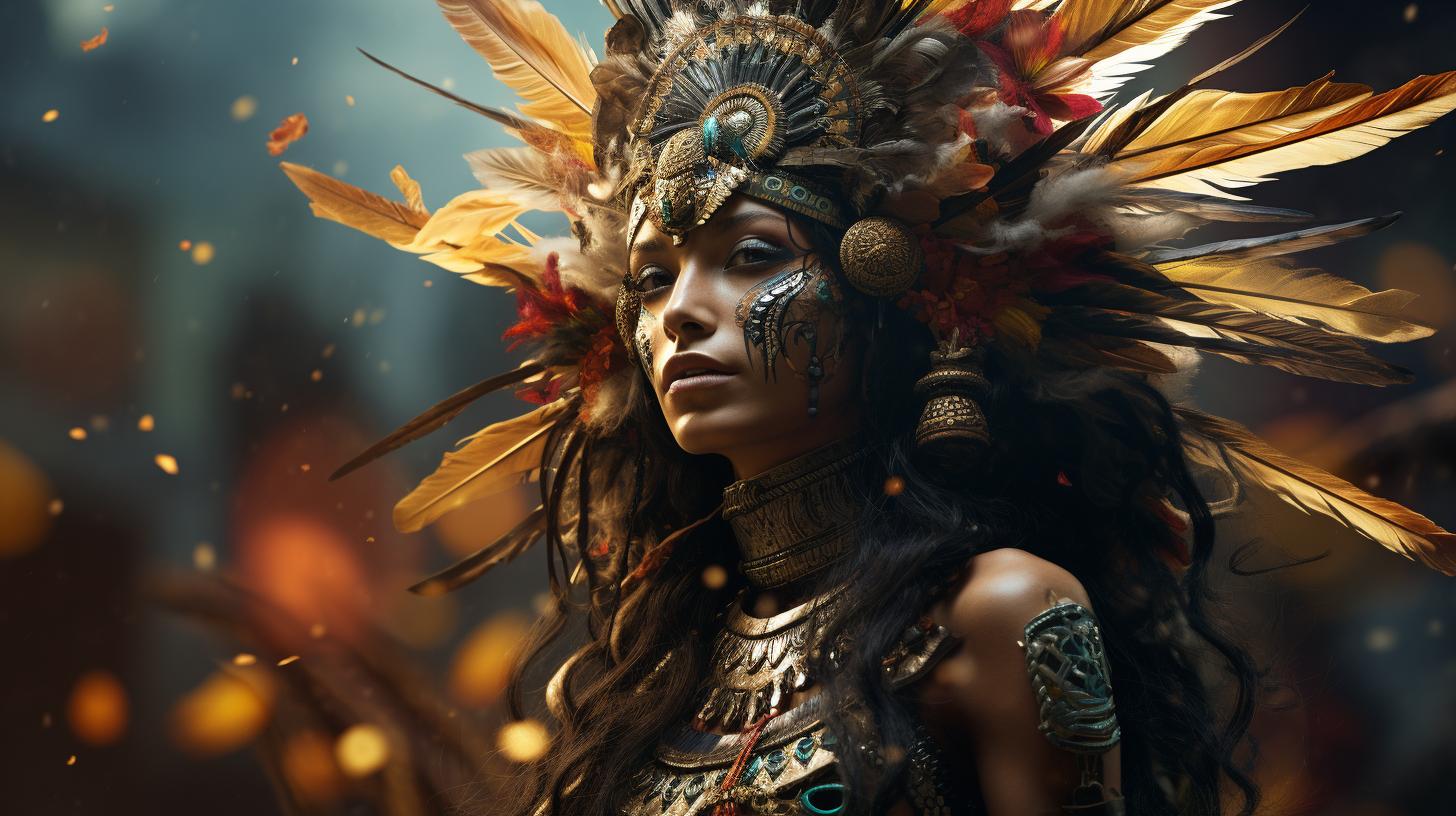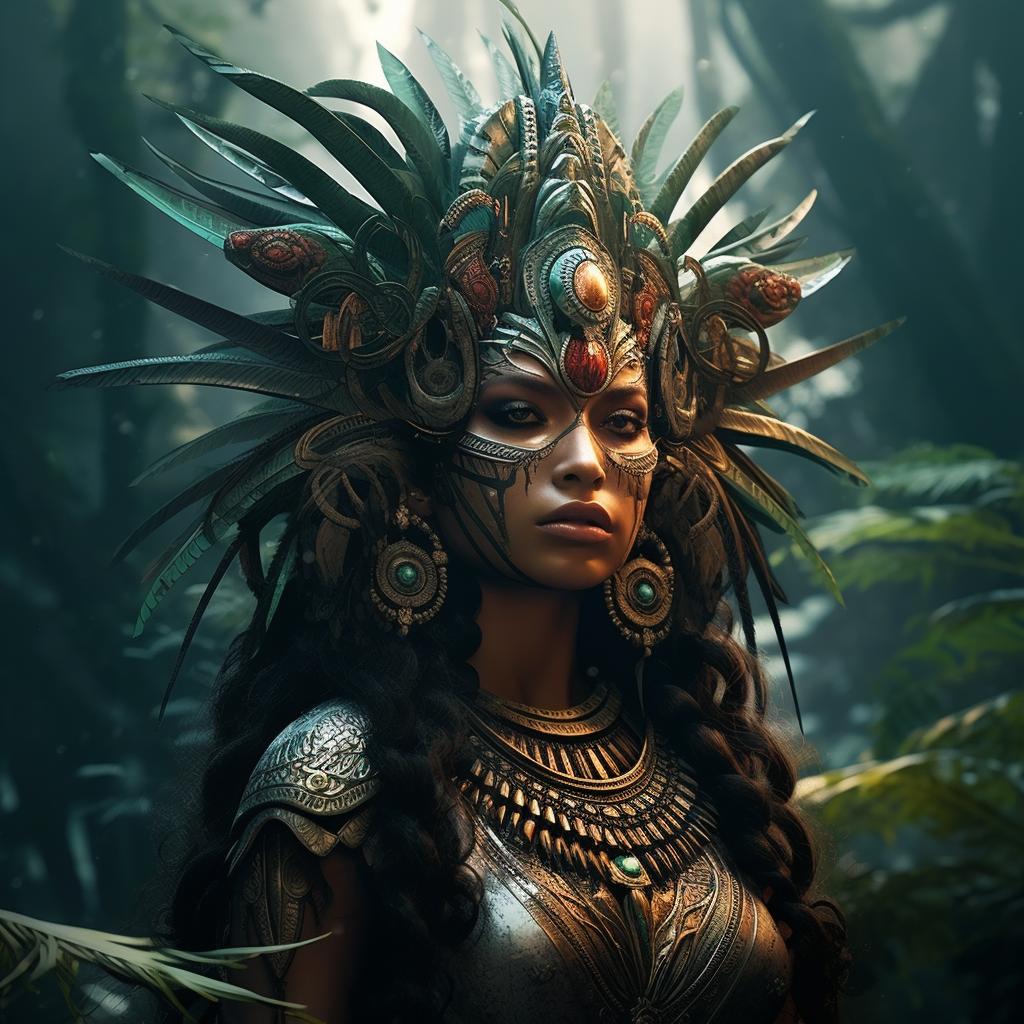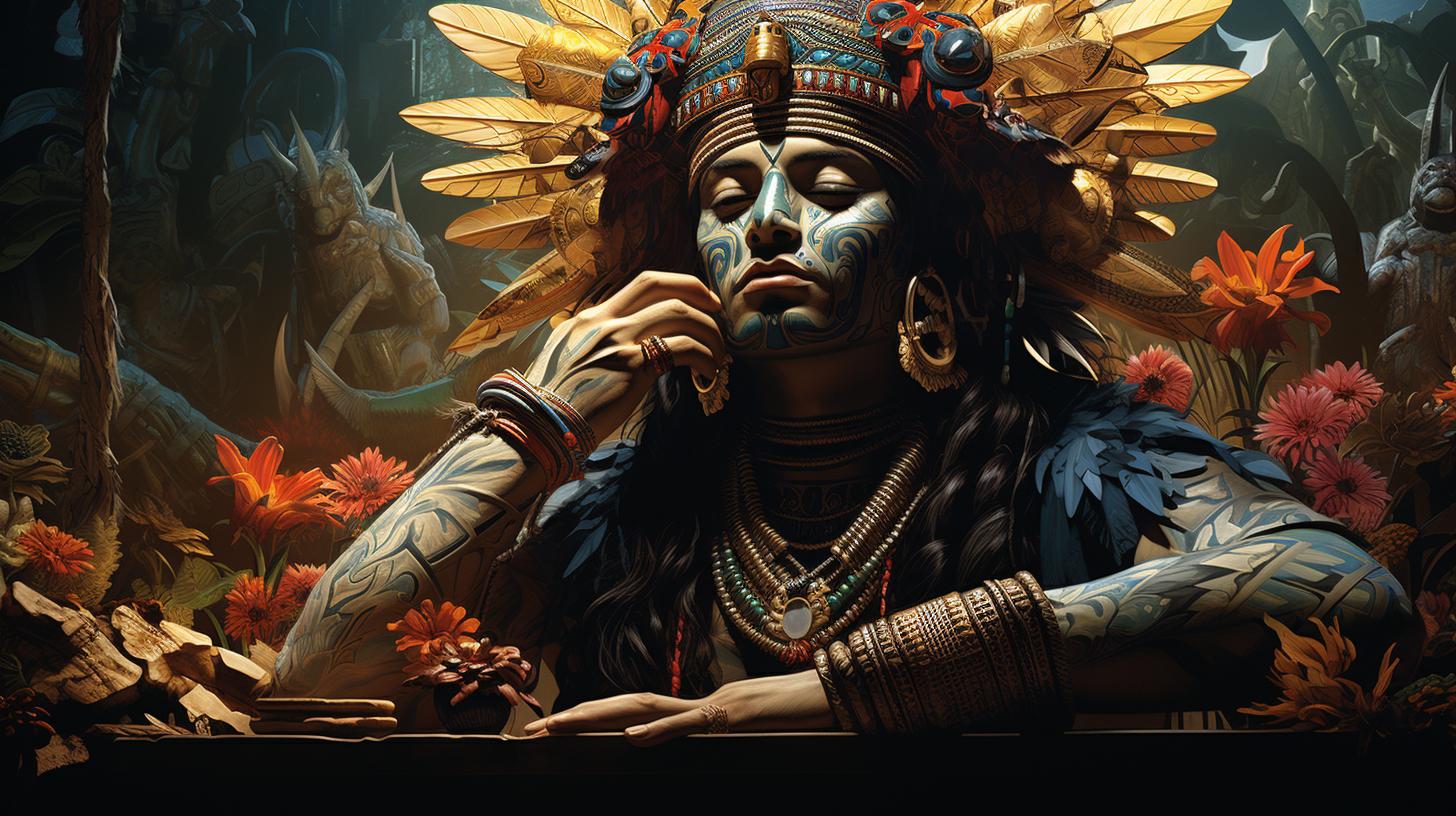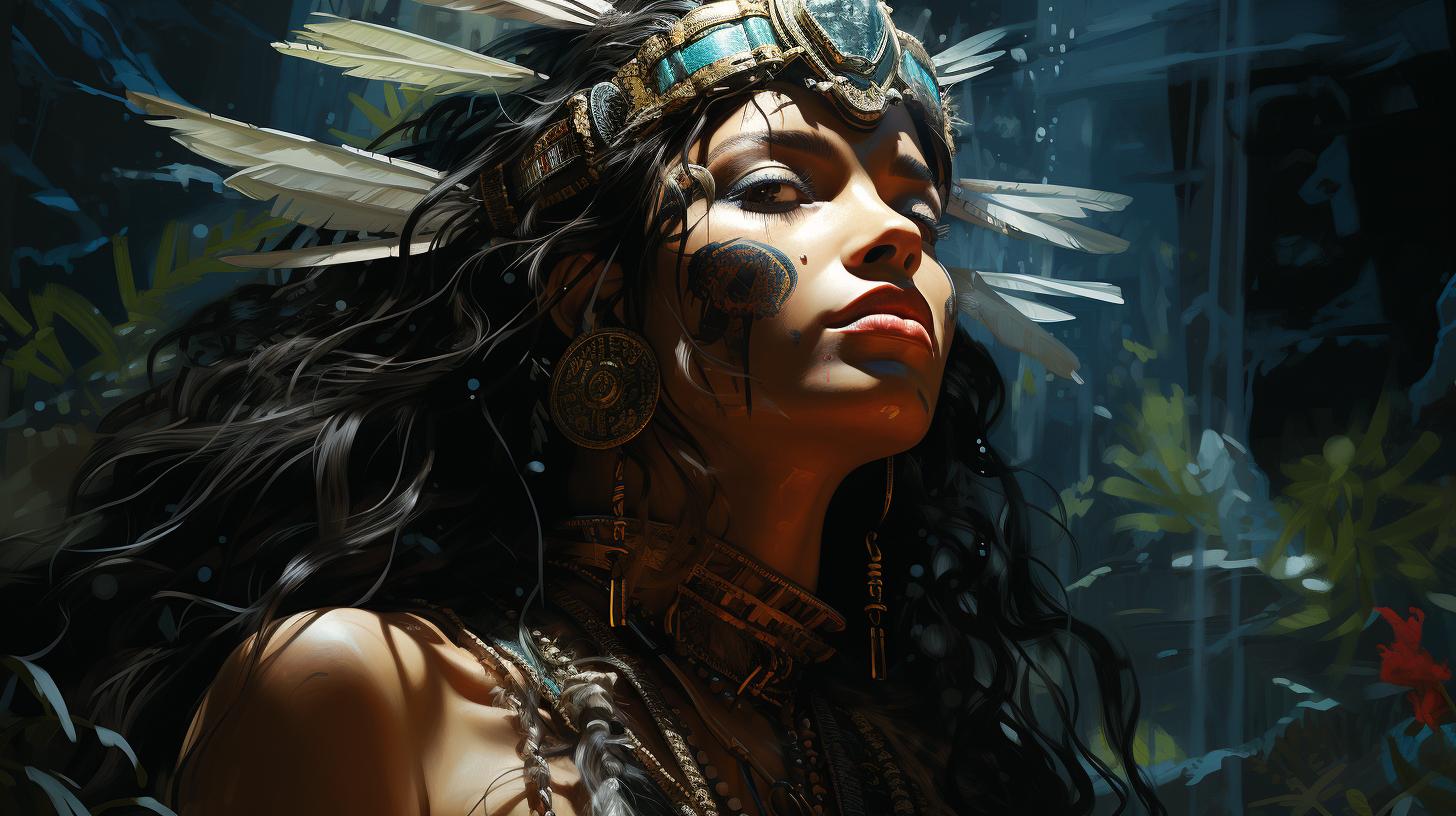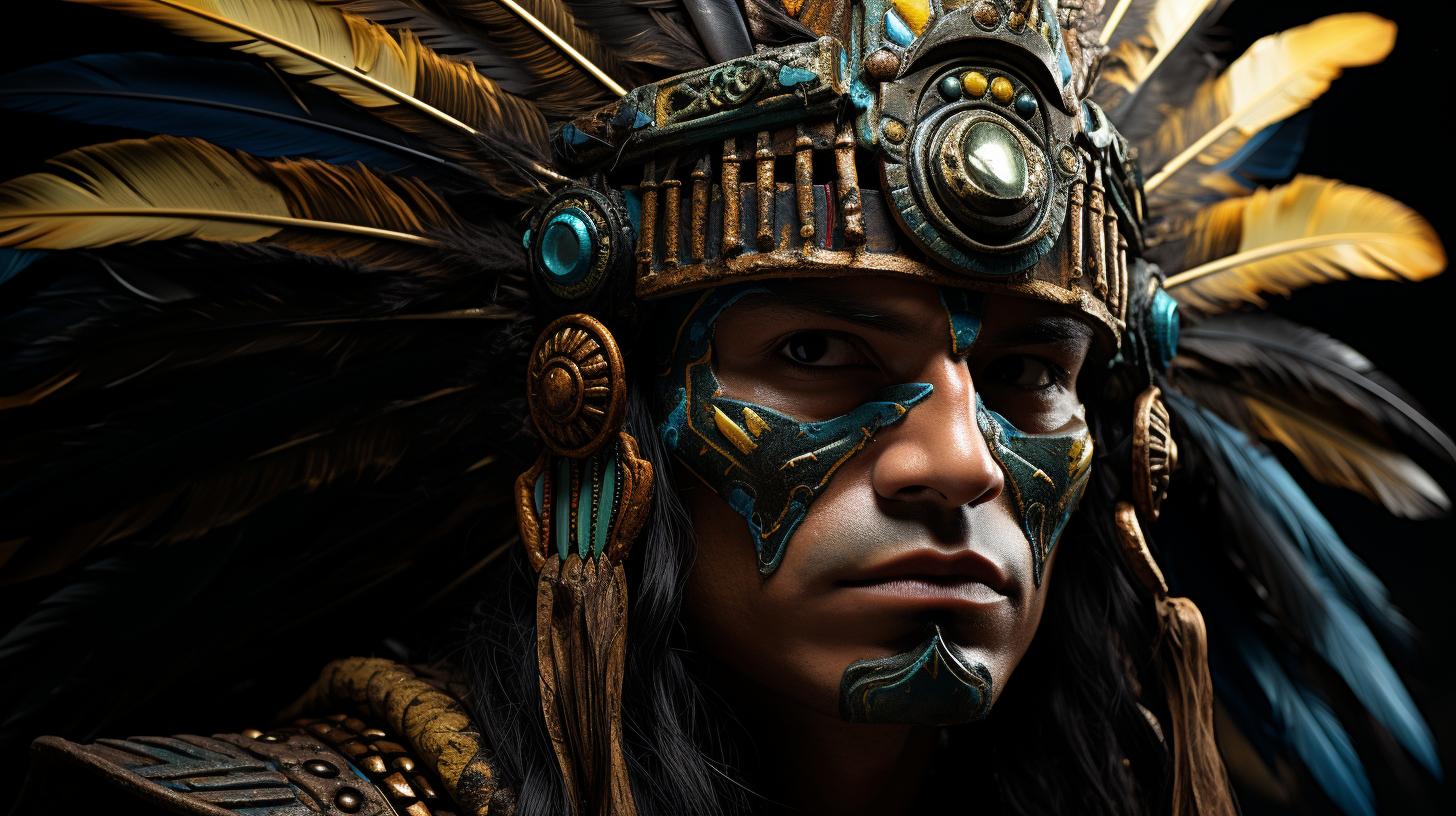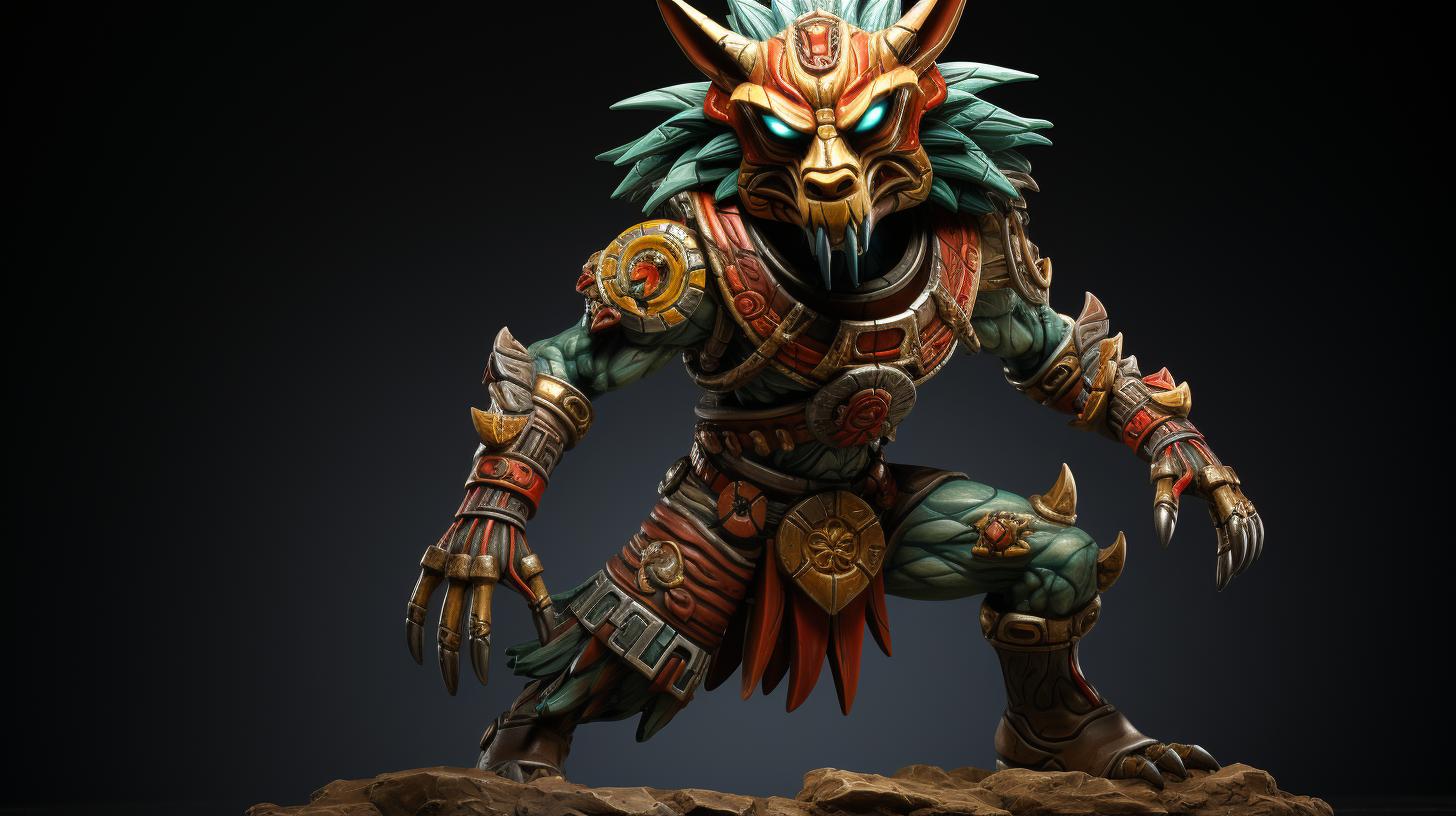Discover the Mysteries of God Itztli: Unleashing the Power of the Aztec Deity
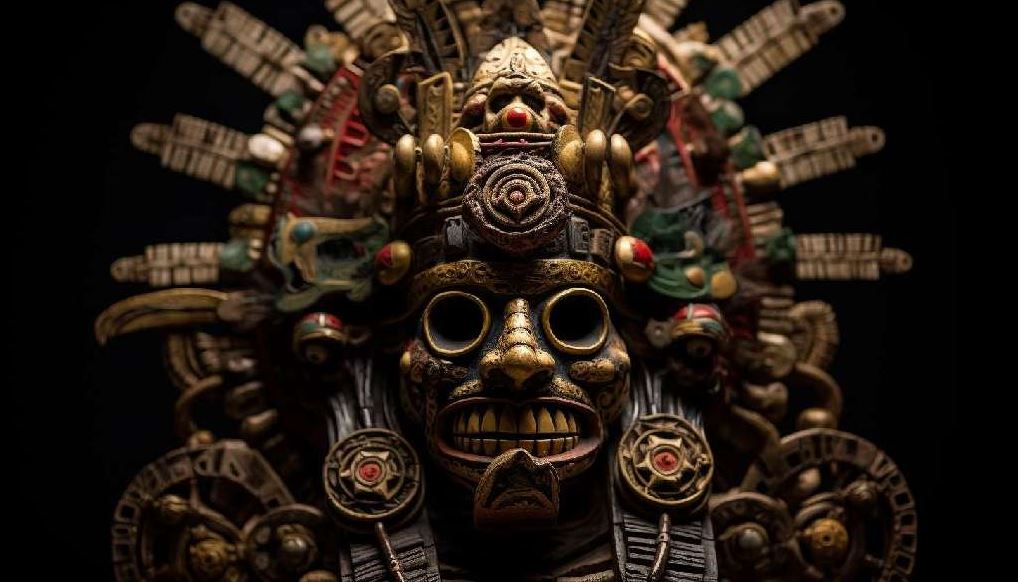
God Itztli, a deity from Aztec mythology, holds diverse characteristics and roles. As the god of the night, sacrifice, and war, Itztli is associated with obsidian blades used in ritual sacrifices.
Itztli is also connected to Tezcatlipoca and shares similarities with Itztlacoliuhqui-Ixquimilli. The use of obsidian in ceremonies highlights its significance. Depicted in the Telleriano-Remensis Codex alongside Mictlantecuhtli, there is uncertainty surrounding the identity of the god on the right.
With high popularity, Itztli’s cultural significance and influence in contemporary art are noteworthy aspects. Dive into the intriguing world of God Itztli and its impact on Aztec beliefs and practices.
Exploring the Role and Attributes of God Itztli
As we delve deeper into the realm of Aztec mythology, we encounter the multifaceted deity known as God Itztli. This enigmatic figure holds a significant role and possesses distinct attributes that captivate our intrigue.
Itztli is associated with various aspects, serving as the god of night, sacrifice, and war.
One cannot help but be fascinated by the duality inherent in Itztli’s nature. On the one hand, he embodies festivity and joy, while on the other, he represents darkness and the ravages of warfare.
It is within this paradox that his true essence lies, encompassing both light and shadow.
One of the primary roles of Itztli is his guardianship over the sacred cuchillas, the obsidian blades used in ritual sacrifices. These intricately adorned weapons bear cute faces with large, piercing eyes, emphasizing their divine significance.
The obsidian itself holds symbolic value, representing Itztli’s association with the divine art of war and sacrifice.
Furthermore, Itztli’s connection to the gods of the hunt intertwines him with the primal forces of nature, emphasizing his dominion over all aspects of life and death. The utilization of obsidian in ceremonial practices further emphasizes his presence in these ancient rituals.
As we explore the rich tapestry of Aztec culture and mythology, delving into Itztli’s realm unveils an intricate web of tradition and symbolism. His dual nature and association with significant aspects of Aztec life make him a compelling and revered deity in the pantheon.
Itztli: The God of Night, Sacrifice, and War
In Aztec mythology, Itztli is revered as the deity of night, sacrifice, and war. His presence is intertwined with both darkness and conflict, embodying the duality of life and death. As the second Lord of the Night, Itztli holds immense power over these domains, commanding the sacred obsidian blades used in ritual sacrifices.
Itztli’s association with the night represents the unseen mysteries that unfold under the cover of darkness. The Aztecs believed that Itztli’s influence extended beyond physical battles, as his presence also permeated spiritual warfare and internal struggles.
Itztli’s role in guiding and protecting warriors during combat was crucial, as they sought his aid and favor for victory.
Sacrifice held great significance in Aztec culture, and Itztli presided over these ritualistic acts. The obsidian blades adorned with captivating faces and piercing eyes symbolized his authority in these ceremonies. These tools of sacrifice were crafted with meticulous care, reflecting the reverence and importance placed upon these sacred rituals.
Itztli’s representation as a god of war further showcases his role in battles and conflicts. The Aztecs believed that Itztli provided strength and courage to warriors in their conquests, instilling them with the determination and ferocity needed to overcome their adversaries.
Through Itztli, the Aztecs acknowledged the interconnectedness of night, sacrifice, and war in their worldview. Itztli’s worship and reverence were a testament to the significance of these aspects in their daily lives, as they sought his divine guidance in the darkness and turmoil of their existence.
As we delve into the depths of Aztec mythology, the multifaceted nature of Itztli’s role as the God of Night, Sacrifice, and War reveals itself, providing insight into the complexities of their beliefs and practices.
The Connection between Itztli and Tezcatlipoca in the Aztec Pantheon
Within the rich tapestry of Aztec mythology, the connection between Itztli and Tezcatlipoca holds great significance. Tezcatlipoca, one of the major deities in the Aztec pantheon, is often associated with cosmic forces and represented by a mirror-like obsidian stone.
Itztli emerges as a variant or aspect of Tezcatlipoca, sharing similar qualities and roles.
The link between Itztli and Tezcatlipoca goes beyond mere resemblance. Itztli is considered the second Lord of the Night and possesses authority over the sacred obsidian blades used in ritual sacrifices.
These blades, adorned with captivating faces and eyes, symbolize the divine power and the connection between life and death. Itztli’s association with Tezcatlipoca reinforces the dark and enigmatic aspects of both deities, representing the unpredictable forces of war, transformation, and cosmic balance.
While the exact nature of their relationship remains open to interpretation, the connection between Itztli and Tezcatlipoca highlights the intricate interplay between different gods within the Aztec pantheon. Their intertwined presence in Aztec mythos weaves a fascinating narrative, revealing the complex cosmology and spiritual beliefs of this ancient civilization.
- The link between Itztli and Tezcatlipoca signifies the interconnection of cosmic forces.
- Itztli is a variant or aspect of Tezcatlipoca, sharing similar qualities and roles.
- Itztli’s authority over obsidian blades showcases the association with ritual sacrifices.
- Both deities represent the dark and enigmatic aspects of war and cosmic balance.
- The relationship between Itztli and Tezcatlipoca highlights the intricate interplay within the Aztec pantheon.
Unveiling the Symbolism of Obsidian in Itztli’s Ritual Knives
Obsidian, the volcanic glass known for its sharpness, holds significant symbolism in the ritual knives of God Itztli.
These blades, adorned with cute faces and large, mesmerizing eyes, were more than mere tools for sacrifice. The choice of obsidian was deliberate, representing the connection between Itztli and the spiritual realm.
The blackness of obsidian embodies the darkness associated with Itztli, the god of the night and war. Its shiny surface reflects the mystical power believed to reside within these knives. The glossy reflection is said to capture and amplify the divine energy present during sacrificial ceremonies.
Apart from its symbolic importance, obsidian’s practical properties were also valued. Its sharpness allowed for precise and swift sacrificial acts, ensuring a swift transition from earthly existence to the realm of the gods.
Among the Aztecs, obsidian was considered a sacred material, and its use in Itztli’s ritual knives elevated their spiritual significance. These blades served as a conduit between the mortal and supernatural realms, a gateway for communication and offerings to the gods.
The symbolism of obsidian in Itztli’s ritual knives extends beyond the physical act of sacrifice. It represents the transformative power of death and the belief in the gods’ ability to bring forth new life from the darkness.
Such symbolism adds depth to the understanding of Itztli’s role and the sacred rituals performed in his name.
Sacred Cuchillas: Itztli’s Obsidian Blades for Ritual Sacrifices
In Aztec mythology, Itztli, the god associated with the night and sacrifice, is revered for his sacred cuchillas, or obsidian blades, used in ritualistic ceremonies. These blades held profound symbolic significance and were an integral part of Aztec sacrificial practices.
The obsidian blades used by Itztli were adorned with mesmerizing designs, featuring cute little faces with big eyes and a fixed gaze. These intricate carvings added an element of mystical allure to the already potent weapons.
The obsidian, a volcanic glass highly valued by the Aztecs, was believed to possess spiritual power and was associated with Itztli himself.
During sacrificial rituals, these cuchillas were used to draw blood, symbolizing a spiritual exchange between humans and deities. The act of sacrifice was seen as a way to maintain cosmic balance and ensure the prosperity of the Aztec civilization.
Itztli’s cuchillas not only served as instruments of sacrifice but also held cultural and artistic significance. They were crafted with great precision and were considered works of art in their own right, showcasing the skilled craftsmanship of the Aztec people.
The legendary obsidian blades of Itztli continue to captivate modern imagination, symbolizing the intricate rituals and beliefs of the Aztecs. Their legacy serves as a reminder of the deep spiritual connections and complex rituals that formed an integral part of Aztec cosmology.
The depiction of Itztli in the Telleriano-Remensis Codex
The Telleriano-Remensis Codex provides a visual representation of the revered god Itztli alongside Mictlantecuhtli, the Lord of the Land of the Dead. In this ancient Aztec manuscript, Itztli is depicted holding a sharp obsidian blade in his hand, symbolizing his association with sacrifice and war.
The intricate details of the illustration showcase the deity’s fierce countenance and divine power.
The image portrays Itztli adorned with a headdress and distinctive facial features. His eyes, large and piercing, captivate the viewer, evoking a sense of both awe and reverence. The emphasis on decoration, such as the cute little faces on the obsidian blades, illustrates the artistic significance as well as the spiritual importance of Itztli’s ceremonial tools.
While Itztli’s identity is prominently represented in the codex, the god depicted to the right remains shrouded in mystery. Scholars continue to debate the true nature of this enigmatic figure, inviting further exploration into the intricacies of Aztec mythology and iconography.
The Mysterious Figure: Uncovering the Identity of the God in the Image with Itztli
Within the Telleriano-Remensis Codex, a fascinating depiction of God Itztli is revealed, presenting a mysterious figure by his side. Scholars and experts have long debated the true identity of this enigmatic god, striving to shed light on the significance of this depiction.
While uncertainty lingers, some theories suggest that the unidentified god could be a representation of Xolotl, the canine deity associated with lightning and death. Others propose that it might be a manifestation of one of the lesser-known deities in the Aztec pantheon, with specific attributes and roles not yet fully understood.
Further analysis and research are required to unravel the exact identity of this god depicted alongside Itztli. Through scrutinizing other relevant codices, examining historical accounts, and consulting with experts, we hope to solve this perplexing puzzle and gain a deeper understanding of Aztec mythology and divine beings.
Sharing the Cultural Significance of Itztli: A Closer Look at Its Popularity
God Itztli, with its fascinating attributes and role in Aztec mythology, holds immense cultural significance even in contemporary times. Let’s delve deeper into the popularity and reverence bestowed upon this intriguing deity.
- Itztli’s presence can be seen in various art forms, including paintings, sculptures, and jewelry, showcasing its enduring appeal.
- The deity’s association with the night, sacrifice, and war resonates with the human fascination for mystery, power, and the divine.
- The use of obsidian, symbolizing Itztli’s presence, in rituals and ceremonies further enhances its allure.
- Itztli’s accessibility as a deity, coupled with its portrayal as both a festive and dark figure, contributes to its wide popularity.
The deity’s strong connection to the gods of the hunt also adds to its cultural significance, embodying concepts of survival and primal instincts.
Moreover, the depiction of Itztli in ancient codices, such as the Telleriano-Remensis Codex, fuels curiosity and enriches our understanding of Aztec mythology.
As we navigate the modern era, Itztli’s legacy endures, impacting contemporary culture and art. It serves as a source of inspiration, appearing in various forms of artistic expression, from paintings to fashion.
By appreciating Itztli’s cultural significance and exploring its popularity, we gain a deeper understanding of the intricate tapestry of Aztec mythology and its enduring influence on society.
The Legacy of Itztli: Influence in Contemporary Culture and Art
God Itztli, with its multifaceted nature and captivating mythology, continues to leave an indelible mark on contemporary culture and art. Its intriguing symbolism and association with sacrifice and war have inspired various artistic expressions.
1. Visual Arts: Artists draw inspiration from Itztli’s representation, often depicting the deity wielding obsidian blades or capturing its enigmatic dual nature. Paintings, sculptures, and digital art showcase Itztli as a powerful and mysterious figure.
2. Literature and Poetry: Writers and poets incorporate Itztli’s essence into their works. His affiliation with darkness, sacrifice, and the hunt provides a rich backdrop for exploring themes of conflict, transformation, and spirituality.
3. Film and Television: Itztli’s enigmatic character has found its way into the realm of visual storytelling. Its presence is felt in movies, TV shows, and documentaries that explore the mythologies and cultures surrounding Aztec civilization.
4. Fashion and Jewelry: Itztli’s striking aesthetics, particularly the obsidian blades, have influenced contemporary fashion and jewelry designs. Jewelry pieces featuring obsidian and motifs reminiscent of Itztli’s iconography have gained popularity.
5. Tattoo Art: Itztli’s powerful symbolism and intricate representation make it a favorite subject for tattoo enthusiasts. Many individuals choose to adorn their bodies with tattoos depicting the deity’s visage or the sacred obsidian blades.
Itztli’s enduring legacy in contemporary culture and art serves as a testament to the continued fascination with ancient mythologies and the enduring power of spiritual symbolism. As time progresses, Itztli’s influence remains relevant, captivating new generations and ensuring its place as a cultural icon.
..











